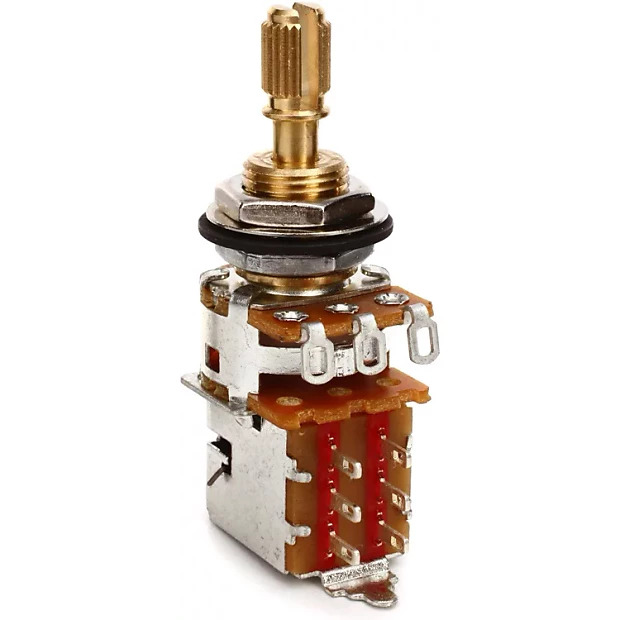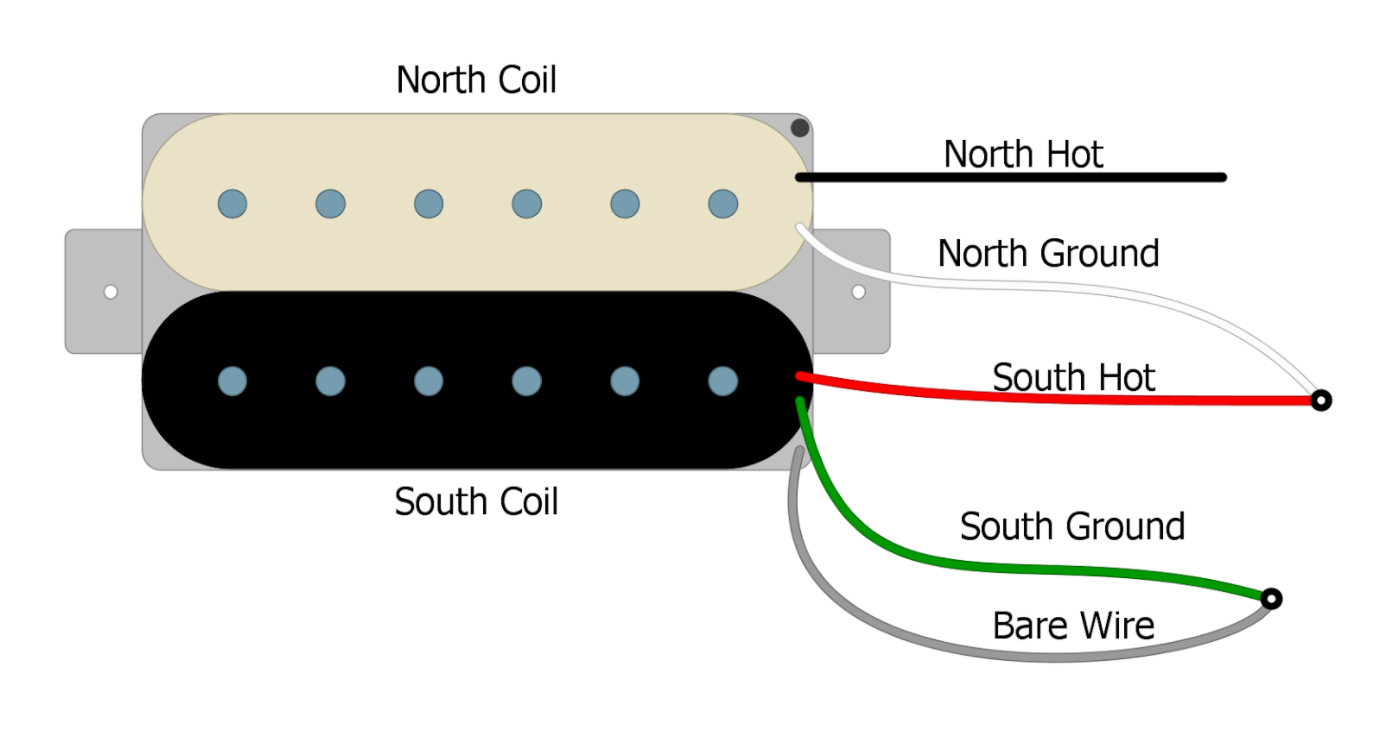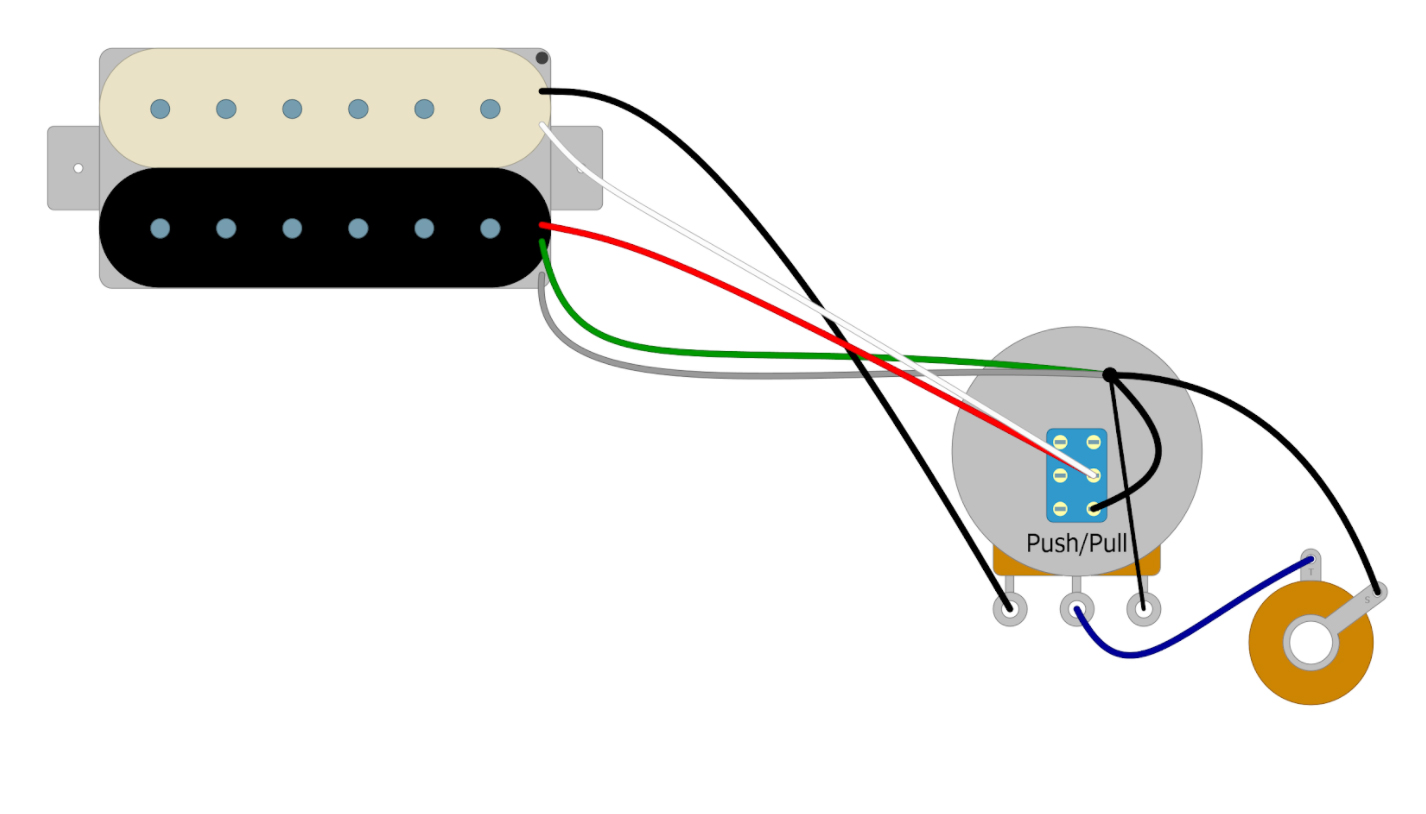
By Ed Malaker
Posted 07/06/2018
This article will cover how to wire a humbucker pickup so that it can be split into a single coil, using a push-pull pot. For the split you need a four-wire humbucker; you cannot split a two-wire without first modifying the pickup itself. Each coil has a Hot and a Ground, and a determination must be made as to which is which before getting started.
Humbucker Wiring Code
If you already know your pickup’s wiring code, you can skip this part. If you don’t, it’s pretty easy to figure out, but you’ll need a Multimeter test unit.
First, set the Multimeter to 20k Ohms and use it to check the wires. Test the wires until you get a reading, and when you do, you’ve found the two wires for one of the coils. The remaining wires will be for the other coil.
To find out the Hot and Ground wires for each of the coils, set the Multimeter to 20 volts. Connect the wires from one of the coils to the Multimeter and tap the pickup with a screwdriver. If you get a positive reading, then whichever wire is connected to the positive lead of the Multimeter is the Hot wire for that coil, and the other is the Ground. Do the same for the other coil.
The Push-Pull Audio DPDT Potentiometer
The push-pull pot may look intimidating, but it is actually just two separate components built into one unit for the sole purpose of giving a guitarist more options, without using more space on the guitar. It’s a standard Volume or Tone Control, combined with a standard Toggle Switch; you pull the Volume or Tone control out and it’s just like flipping a switch. The Volume or Tone part of the circuit will be wired a little bit differently than normal, but it’s not very hard to do. The Push/Pull toggle switch will be wired the same way we would wire a regular toggle switch.
The Push-Pull Audio DPDT Potentiometer is not used much outside of the guitar community, so it’s hard to find them in values other than 250k and 500k. This might be something to think about if you have odd-value pots.
If you’re only going to split one pickup, then you might consider looking at a SPST (Single Pole Single Throw) Potentiometer; they can be wired the same way (as this example) but are much less expensive than a DPDT (Double Pole Double Throw) Potentiometer.
The Wiring
Here, we’re using a Seymour Duncan humbucking pickup, just so we have the wire colors. To keep it really simple we’ll use one pickup, one Push-Pull Audio DPDT Potentiometer, and an Output Jack.
Seymour Duncan humbuckers use slugs (posts) as the North Coil and screws for the South Coil. The North Coil uses a Black wire for Hot and a White wire for Ground. The South Coil uses a Red wire for Hot and a Green wire for Ground. Now solder the White and the Red wires together, just as you would if you weren’t going to split the pickup. Solder the Green wire and the Bare wire together also. (Fig 1)
Next, wire the pickup to the Volume and to the Output Jack just as you would normally do. Solder the Black wire from the pickup to Tab 1 of the Push-Pull Audio DPDT Potentiometer and solder Tab 3 to the back of the potentiometer. Solder the Green wire and the Bare wire to the back of the pot also. (Fig 2)
Now solder a wire from the Center tab of the Push-Pull Pot to the Tip tab of the Output Jack, then solder a wire from the Sleeve tab of the Output Jack to the back of the Push/Pull Pot. (Fig 3)
Coil Splitting with a Push-Pull Pot
Normally at this point, we’d be finished, but since we want to add coil splitting, there’s one more step. If you look at the Push-Pull pot, you will see the tabs for the Push-Pull switch. You should see six tabs: three tabs top to bottom on the left, and three on the right. Solder the Red and White wires from the Pickup to the Right Center Tab of the Push-Pull pot. Now solder a wire from the Right Bottom Tab of the Push-Pull pot to the back of the Push-Pull pot. (Fig 4)
Fig 4
That single step is really what this whole article is about. When you pull the Switch, the Red and White wires get connected to the Ground, the South Coil is shorted out, and the North Coil produces the sound. If you have multiple pots on your guitar, I recommend selecting the one that you use the least as the candidate for the Push-Pull pot.



